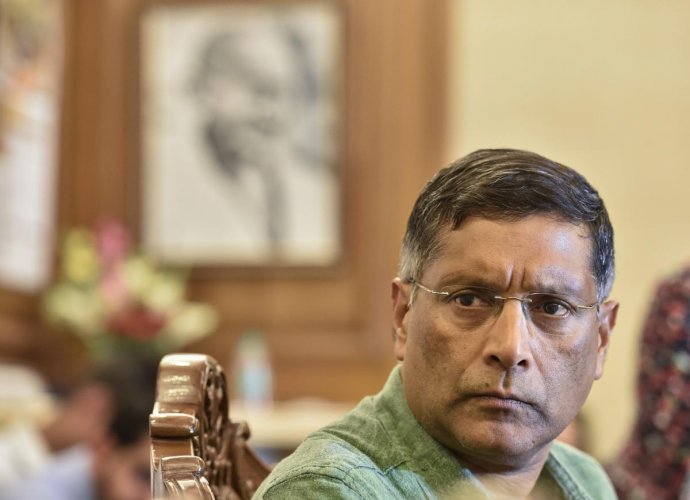
Arvind Subramanian debunks Modi govt claim on rate of economic growth

Arvind Subramanian has let the economy out of the bag. His research has shown up the Indian growth story for what it is: overhyped, exaggerated and politicised.
In his research paper, the former chief economic advisor to the government of India has argued that India’s GDP growth may have been overestimated by at least 2.5 per cent. In the period between 2011-12 and 2016-17, it grew at a steady 4.5 per cent, instead of the 7 per cent average rate put out by the government.
Subramanian’s research immediately does two things. First, it tells us that the tag of “fastest growing economy in the world” claimed by India on many occasions was just a statistical lie. If 4.5 per cent was the real rate, India was behind at least 50 countries whose GDP growth was much higher. And compared to China, with whom India is competing for growth, the rate was a whopping two per cent less. Many countries in Africa grew at a faster rate during this period were from Africa. Even our neighbours like Bangladesh, Nepal and Pakistan—if their figures were not manipulated— grew at healthier rates.
Two, the all-guns-blazing—a phrase Subramanian has used to define the earlier, incorrect estimates— image of the Indian economy is a myth. Between 1990 and 2010, India’s economy grew at an average rate of 6.6 per cent. A two per cent dip means India is back to what was derided as the Hindu rate of growth. This term was used for the economy during the pre-liberalisation period when the economy remained in the 3-4 per cent range. Two decades later, we are doing just marginally better than that.
Subramanian’s research vindicates anecdotal evidence of a slowdown, a trend denied by the government and statisticians through clever accounting and date analysis. During the past few years, there were unmistakable signs that the economy is struggling: Real estate was down, manufacturing figures were struggling, automobile sales had dipped, aviation industry was in doldrums, farmers were complaining of falling income and unemployment rates were high. Two Indias appeared to be existing simultaneously, albeit in different worlds, one on the ground, the other in accounting books and inflated data.
The problem with wrong data is that it leads to what Sherlock Holmes would have called theorising before looking at the facts. “Insensibly,” as he argued, “one begins to twist facts to suit theories instead of theories to suit facts.”
So, it can be reasoned that some of the basic concepts of India’s economic policy during this period of statistical overestimation would have been flawed. They would have been premised on a spectacular growth rate which, in reality, was going back to the pre-1990 era. The apt metaphor for it would be a physician treating a patient on the basis of a fundamentally wrong diagnosis, like advising more sugar to a diabetic.
This implies that when steps should have been taken to revive the economy, push it back to its post-liberalisation days, the government was in denial, convinced that everything was hunky-dory, arguing why fix it when it ain’t broke. As Subramanian points out, lending rates were kept high, when they should have gone down to boost investment and manufacturing, to drive up consumption and sales. None of this, unfortunately, happened. In fact, the policies implemented under the fog of misinformation would have further pegged back the economy.
Had India known its rate has dipped to 4.5 per cent, would the government have had the guts to try its misadventures like demonetisation, which further hit the GDP by around two per cent? Had the country been told that we are going back to the Hindu rate of growth, would there have been such timid opposition to the faulty and hasty Goods and Services Tax?
Over the past few months, there have been whispers about the Indian economy being in real bad shape. One wag even argued that the Congress is lucky to have lost the election otherwise it would have been blamed for the mess that is soon hit the roof. Subramanian’s research, at least, alerts us to the challenges ahead, it takes the blinkers off our eyes.
The government, which has been blasé about India’s economy, needs to address the economy now in right earnest, instead of propagating myths and spreading canards through blogs. Thankfully, the man who had more flair for blogging than managing the economy is free to practise his core competence. A new government is in place, a new finance minister has taken over.
To begin with, the government needs to accept that growth rate is indeed lower than what it had boasted about. The lies, the propaganda, the denial should end. And then, it should set about the task of boosting growth with investor-friendly reforms, bold rate cuts and rapid investments in infrastructure.


